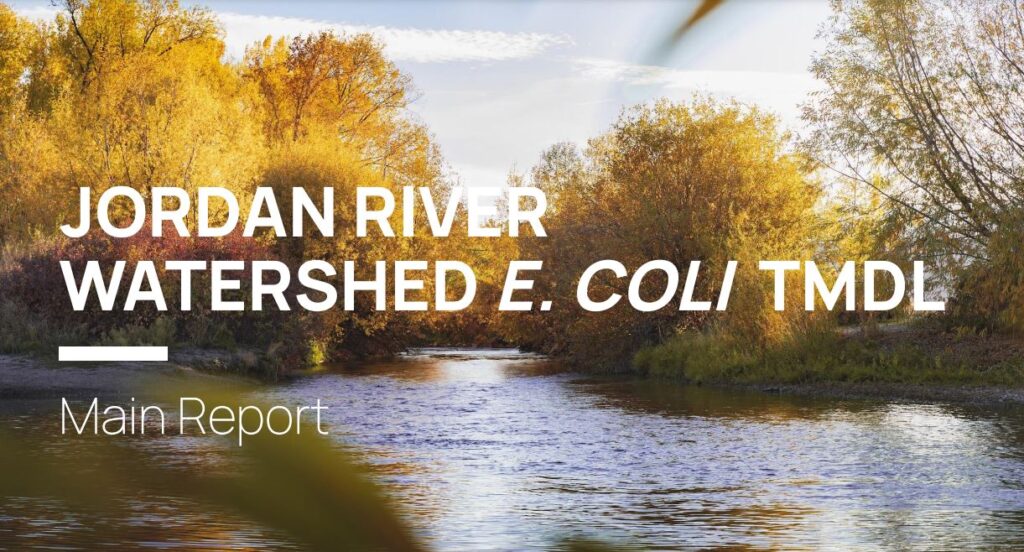Section 303(d) of the Clean Water Act (CWA) requires states to develop Total Maximum Daily Loads (TMDLs) for waters that do not meet water quality standards. The TMDL process establishes allowable loadings of pollutants or other quantifiable parameters for a waterbody. This TMDL addresses the Escherichia coli (E. coli) impairments in fourteen assessment units within the Jordan River watershed. These waterbodies have been classified as impaired in the 2006 through 2022 Integrated Reports (Figure 1). Six out of the seven east-side major tributaries, two of the three west-side tributaries and several sections of the main stem Jordan River are addressed within this study.
These AUs were deemed a high priority for TMDL development due to the high recreational use, culinary use, ongoing TMDL studies and watershed planning, waterborne pathogen pollutants, and a combination of both point and nonpoint sources of pollution. The study was designed to assess and restore the drinking water and recreational beneficial uses of these waters as defined by Utah Administrative Code R317-2-6 and the CWA.
The Jordan River Watershed E. coli TMDL uses a concentration-based approach, with allowable levels of bacteria set as a concentration expressed in bacteria counts/100 mL of water. The goal is that all discharges to surface waters (point and nonpoint source) meet the water quality criteria, so standards are met throughout the waterbody. This approach is a shift from previously completed E. coli TMDLs that were based upon necessary load reductions to meet instream water quality standards. Several states have had success with this concentration-based approach. The Utah Division of Water Quality (DWQ) believes this approach has several benefits for the impaired AUs in the Jordan River watershed. A concentration limit is easier for stakeholders to understand and implement compared to a load-based limit. This approach is also equitable for all Utah Pollutant Discharge Elimination System (UPDES) permittees within the impaired AUs, as all are held to the same limit and permit requirements related to best management practice (BMP) implementation regardless of area of responsibility.
Monthly sampling results of over 50 monitor locations collected by both Salt Lake County Watershed and DWQ staff between 2007 to 2021 provided insight into the temporal and spatial extent of the E. coli impairment. Most of the perennial streams within the valley floor often exceeded the numeric criteria during the warmer months (late summer). This study found that the E. coli concentrations must be reduced between 24 – 88% to meet water quality standards during the recreation season throughout the watershed.


